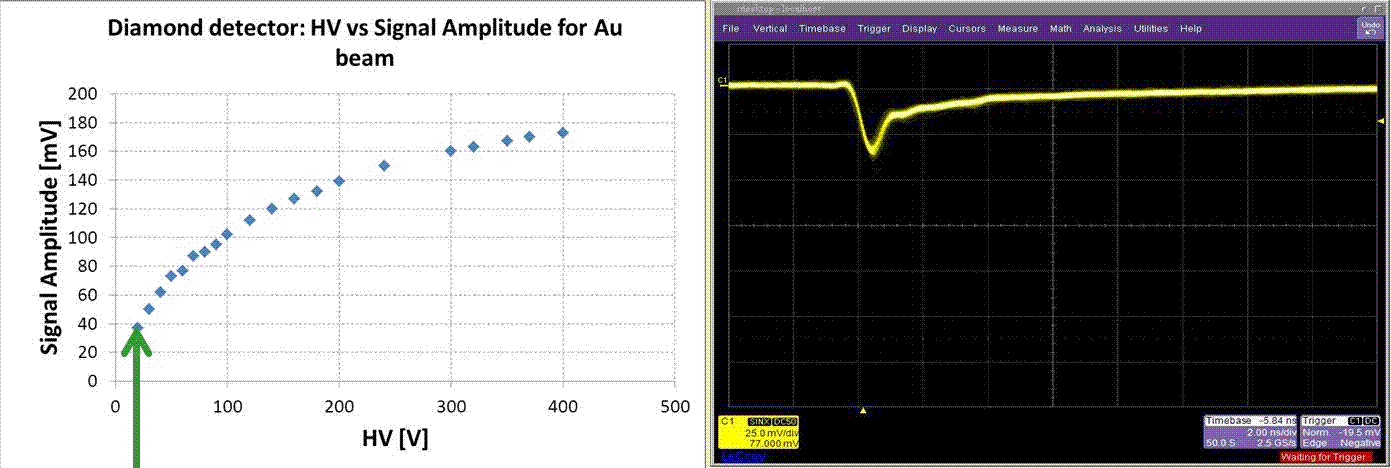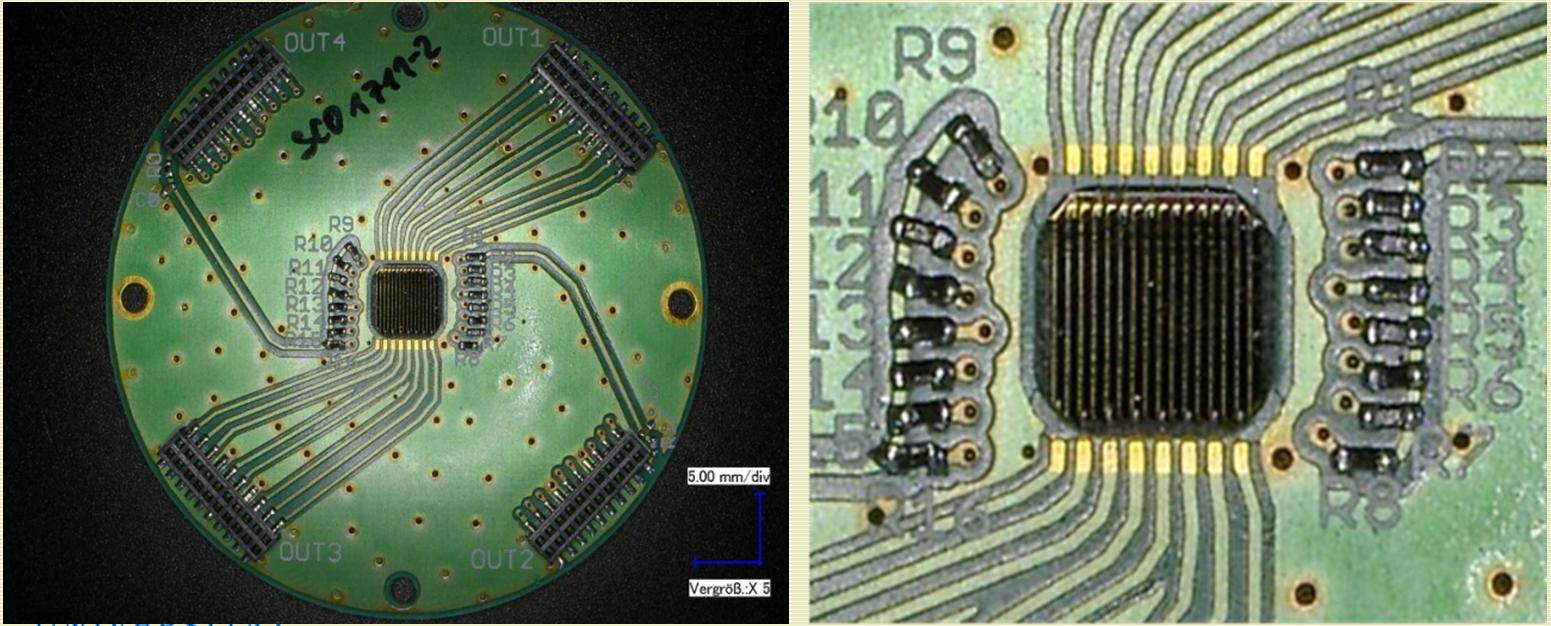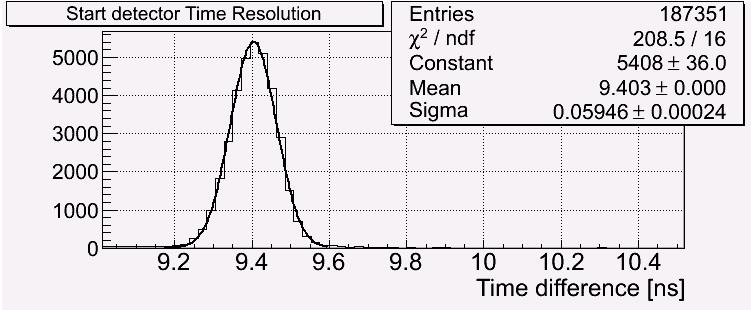The Start detector for heavy ion experiments in HADES is used to determine the reaction time (T0) and monitor properties and quality of the beam. A scCVD (Chemical Vapour Deposition) diamond detector has been used for this purpose. CVD diamond material is mainly known for its excellent charge collection efficiency which results in very good energy resolution and high drift velocity of both electrons and holes. These properties are demonstrated in the animation below. The scope waveforms were collected with a scCVD diamond detector with thickness of 50um irradiated with Au beam ions @ 1.25 AGeV.

T0 determined by the Start detector is a part of the Time of Flight measurement used for the particle identification and therefore a precision better than 50 ps (sigma) is required. In the upgraded HADES spectrometer, prepared for high multiplicity and high rate experiments, reactions at Au-beam intensities of about 2-3*106 ions/s can be studied. Such beam intensities pose challenges on the start detector mainly in terms of the rate capability and the radiation hardness.
The CVD diamond used for the Start-Veto system has the following advantages:
(i) high rate capability (signal base-width of about 2 ns),
(ii) radiation hardness (better than Silicon),
(iii) fast signal collection time (hole mobility 1200 cm2/V*s),
(iv) low noise (band gap 5.5 eV).
(v) no additional cooling is needed due to a thermal conductivity of 1000 - 2000 W/m*K ; hence the detector can be operated at room temperature.
In the HADES runs with Au+Au @ 1.25AGeV a set of two newly produced beam detectors was used. A start detector with size of 4.7mm x 4.7mm, located 2cm in front of segmented Au target, was made of monocrystalline diamond material. The thickness of the detector was chosen to be 50um in order to reduce as much as possible the interaction probability of the beam ions in the detector material, which for 50um diamond equals 0.26 %. The picture of the Start detector is shown below - left.
The Veto detector with thickness of 100um, located 70cm downstream of the target, was made of polycrystalline material. Both detectors and the Au segmented target were aligned with the beam line axis to provide an easy beam focusing procedure. The detectors were operated at 1 V/um voltage.
The metallization of the Start detector consisted of a 50nm Cr layer deposited on the diamond and followed by a 150nm Au layer. For the Veto detector an Al metallization was used and is shown in the right picture.

To increase the precision of position measurement and rate capability a strip metalization has been proposed. 16 stripes on each side of the scCVD diamond plate provide X and Y position measurement for each single beam particle. The stripe width is about 200 um and 80 um space between strips. Pictures below show the PCB with mounted diamond sensor connected to the readout electronics.

Excellent beam monitoring capability of the device are demonstrated in the histograms showing profile of Au beam during the HADES experiment. Archived beam focus is better than 1.3 mm (3 sigma) in Y direction and 1.0 mm (3 sigma) in X. Such a beam spot at the HADES focal point is essential as the HADES has to use very small target elements (2.2 mm in diameter) in order to reduce the background processes.
Following the requirement the Start detector delivers a time measurement with precision better than 50ps (sigma) for a single beam particle. At the same time it can stand the beam intensities requested by the physics program which are about 2-3*106/s/mm2. The spectrum below was taken with an Au beam at 1.25 AGeV with the scCVD based Start detector in HADES measured in HPTDC chip which run in 25ps/bin mode. Obtained time resolution was better than 50ps (sigma).

Publications:

